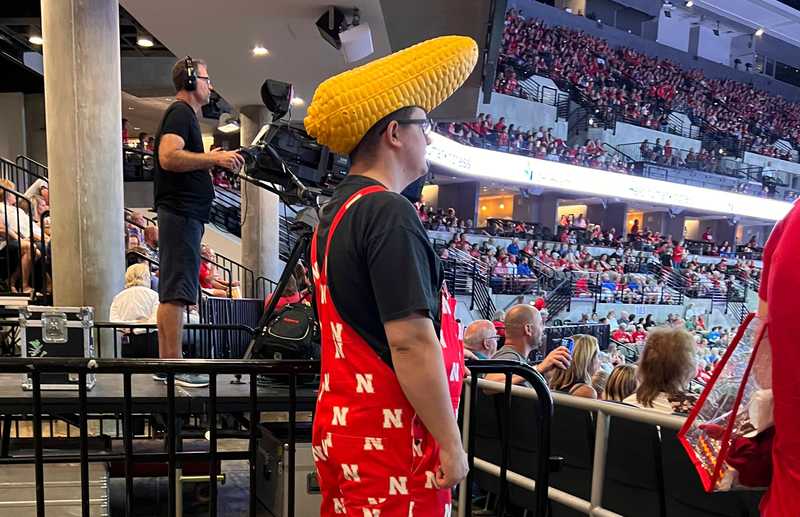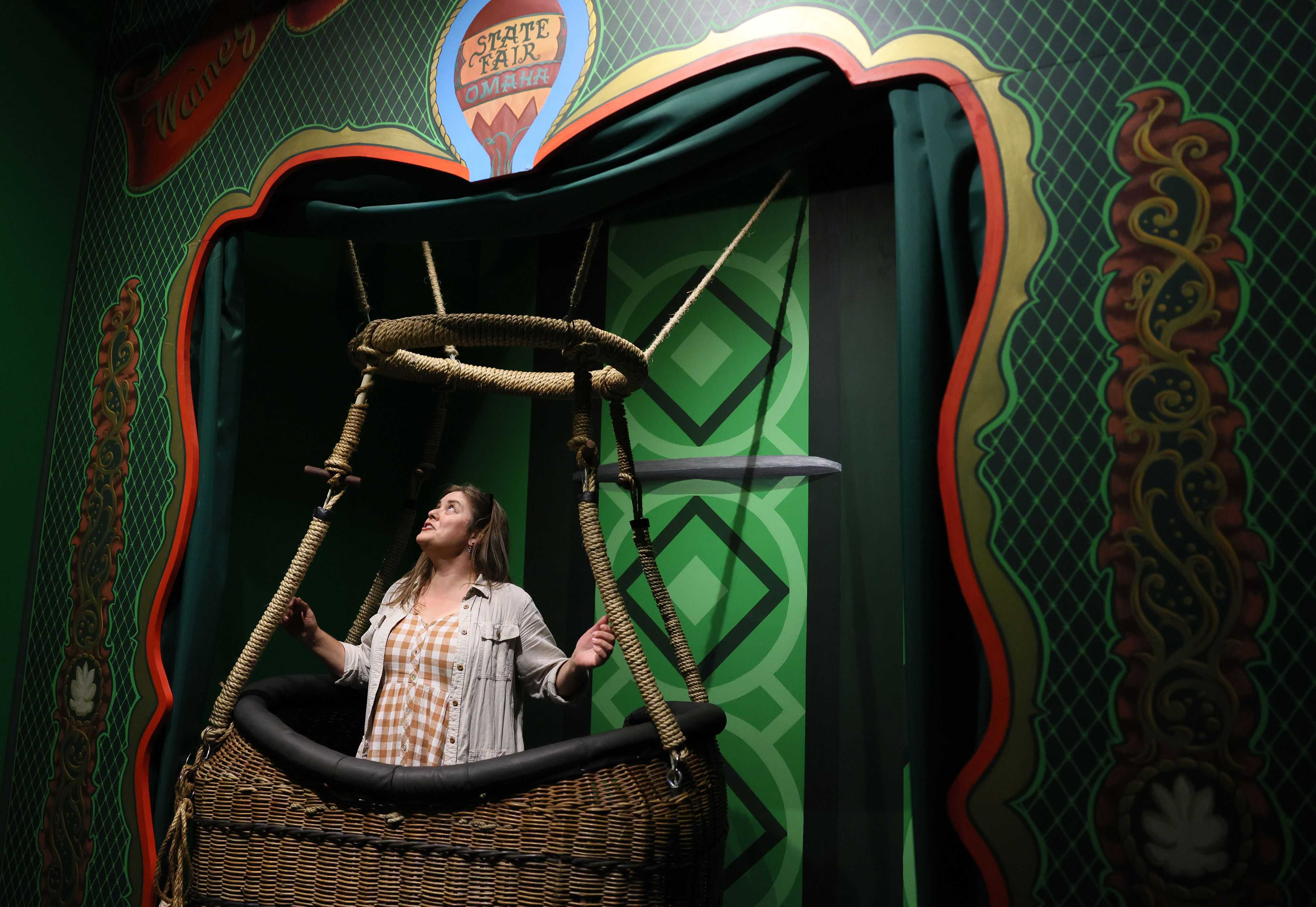
Seattle team
Oct. 27, 2022
Her marriage was in trouble. Something drew her to the OZ Museum.
WAMEGO, Kan. — Laura Fredrickson needed time to think.
Her marriage was in trouble, and the resulting separation had dredged up pain and sadness left over from her childhood. So the 34-year-old from St. Paul, Minn., did what generations of Americans have done to find reflection and epiphany: She set out on a road trip.
Somewhere on the way, while Googling roadside attractions, she turned up one that made her heart leap — the OZ Museum in Wamego, Kan., just off Interstate 70. Suddenly, a place she’d never heard of beckoned to her like a siren song from childhood.
“OZ OR BUST,” she scratched into the dust on her rear windshield.
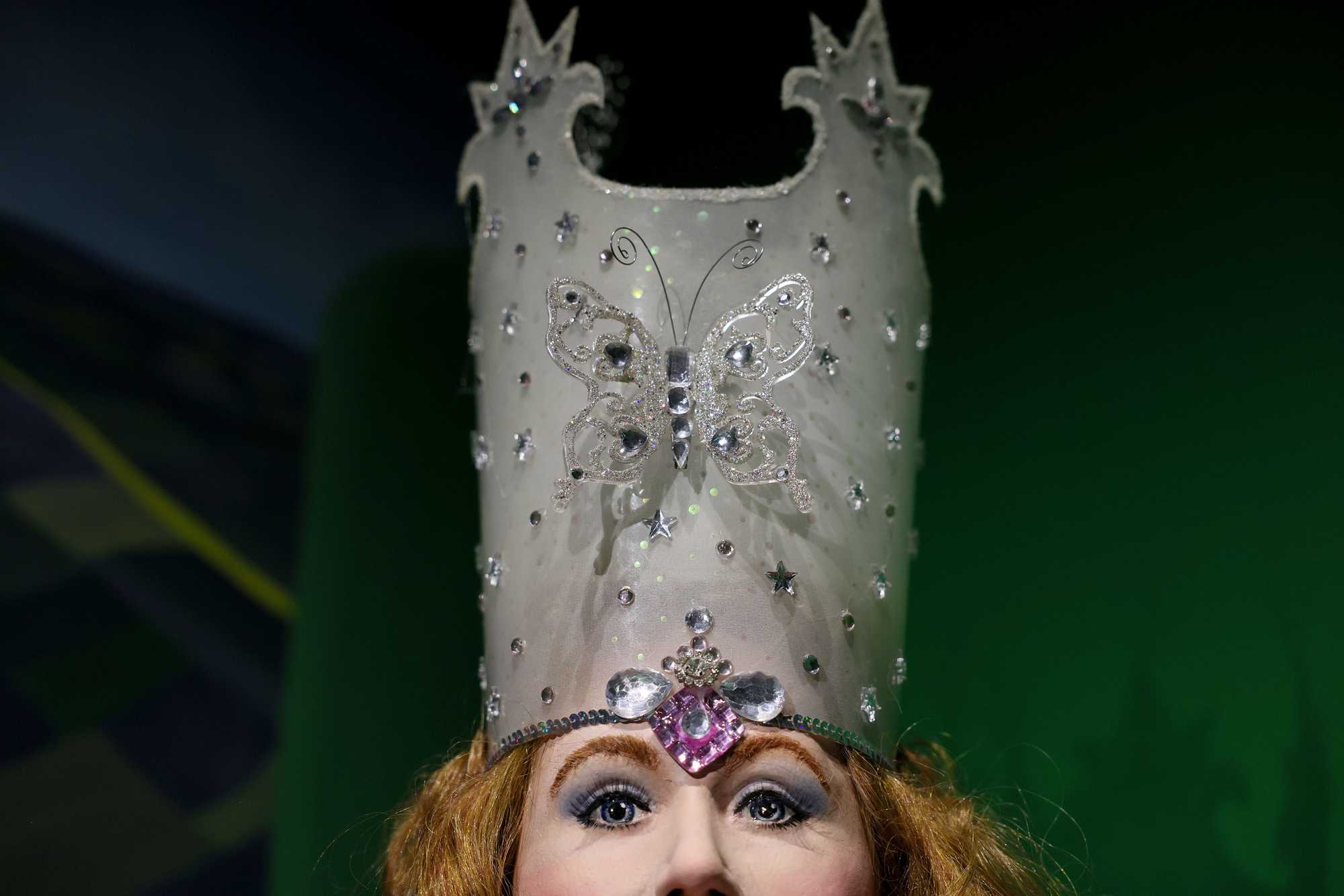
Recent stories from the Seattle team
Fredrickson could not recall when she had first seen “The Wizard of Oz.” By the time she was in first grade, she would only wear “Dorothy dresses,” resembling the blue-and-white gingham frock worn by Judy Garland in the 1939 film. Fredrickson was an only child, in a home that wasn’t always happy, and something in Dorothy’s story made her feel less alone.
“It was about one girl finding herself in a terrifying place, and finding her way through it,” Frederickson said, sitting in the empty breakfast room at her Wamego hotel shortly before setting out for the museum.
In a perfect world, maybe, this pilgrimage was one her parents could have afforded when she was small, to delight her with the life-size Tin Man, Scarecrow, and the rest, part of a meticulously-maintained collection of 2,000 “Oz” artifacts that includes a swatch of Garland’s famous dress. But on a bright September morning, in a new place she had sought out on her own, Fredrickson was making peace with the way things had turned out instead.
“Little me would have loved this,” she said, smoothing the front of the gingham dress she’d chosen for the occasion. “But big me can do this for myself.”
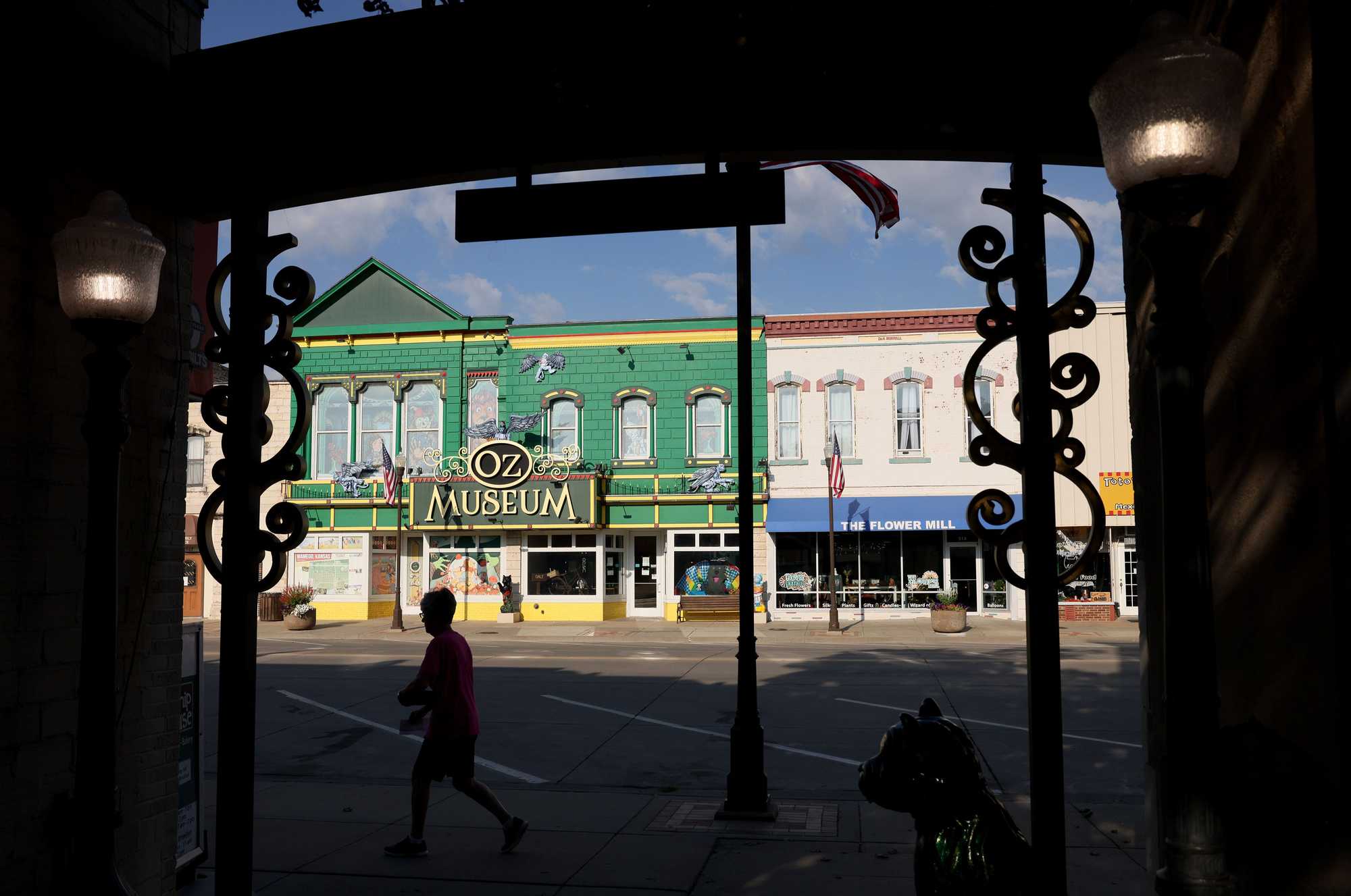
Nowhere in the book by L. Frank Baum, or in the movie for that matter, is Dorothy’s Kansas hometown identified. Wamego’s link to “Oz” is tenuous. The centerpiece of its historic downtown is the Columbian Theatre, built in 1895 by a local businessman and furnished with finery purchased from the World’s Columbian Exposition in Chicago he had visited two years earlier. There, all 220 exposition halls were painted white and lit by electric lights, still a novelty at the time — a sight so dazzling fairgoers were given tinted glasses. According to legend, Baum gazed at the otherworldly scene through his green-tinted spectacles, and the idea for Oz’s “Emerald City” was born.
More than a century later, Wamego seized upon the tale to fuel its tourist trade. The OZ Museum opened in 2003, its small space crammed with treasures and unlikely insights, about Baum’s feminist family members and their influence on his female characters, and about the lives of actors in the film. One display features Olga Nardone, describing the Newton, Mass., native as the smallest Munchkin and the first to emerge and welcome Dorothy to Oz.
Today, the museum draws more than 30,000 visitors a year off the highway, through the cornfields, and into this city of 5,000. It has inspired new life downtown: a restaurant called Toto’s TacOZ!; an ice cream parlor where the flavors pay tribute to the movie. Across the street, a yellow brick path leads to the Friendship House bakery, where morning regulars grab their personalized mugs from a shelf and settle in together at their favorite table.

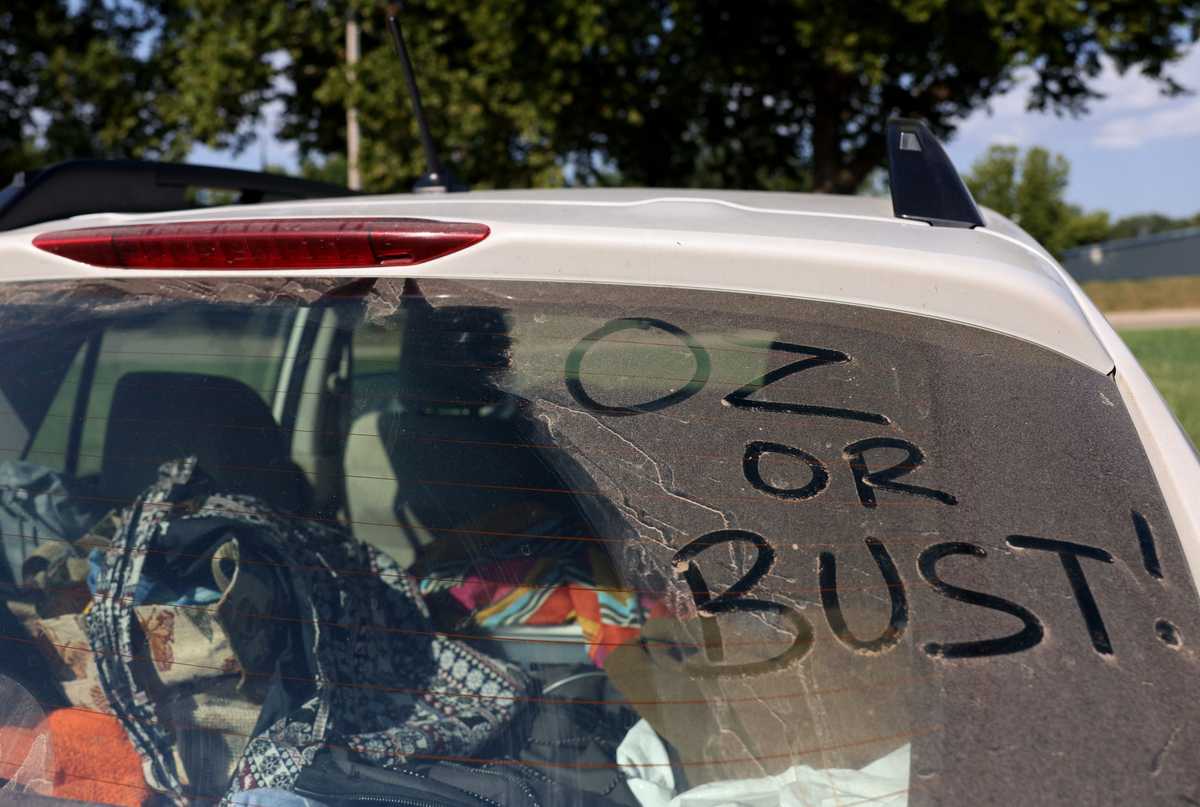

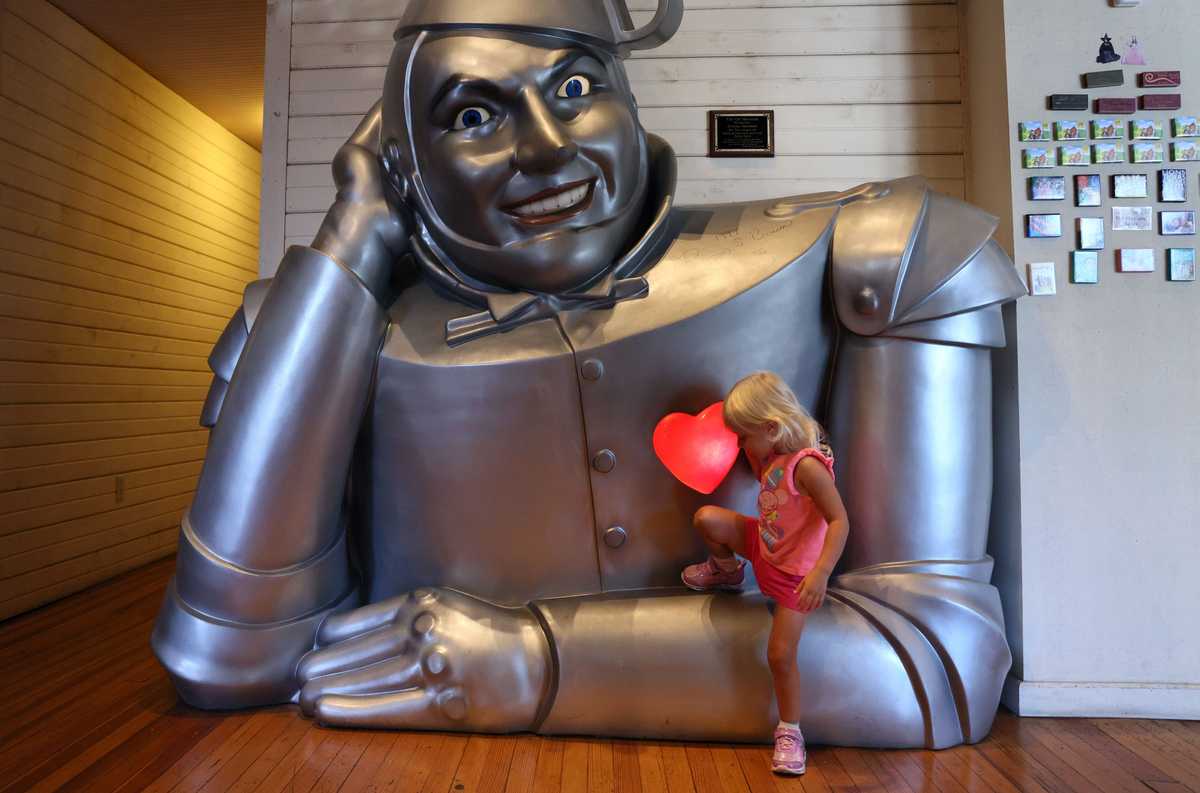
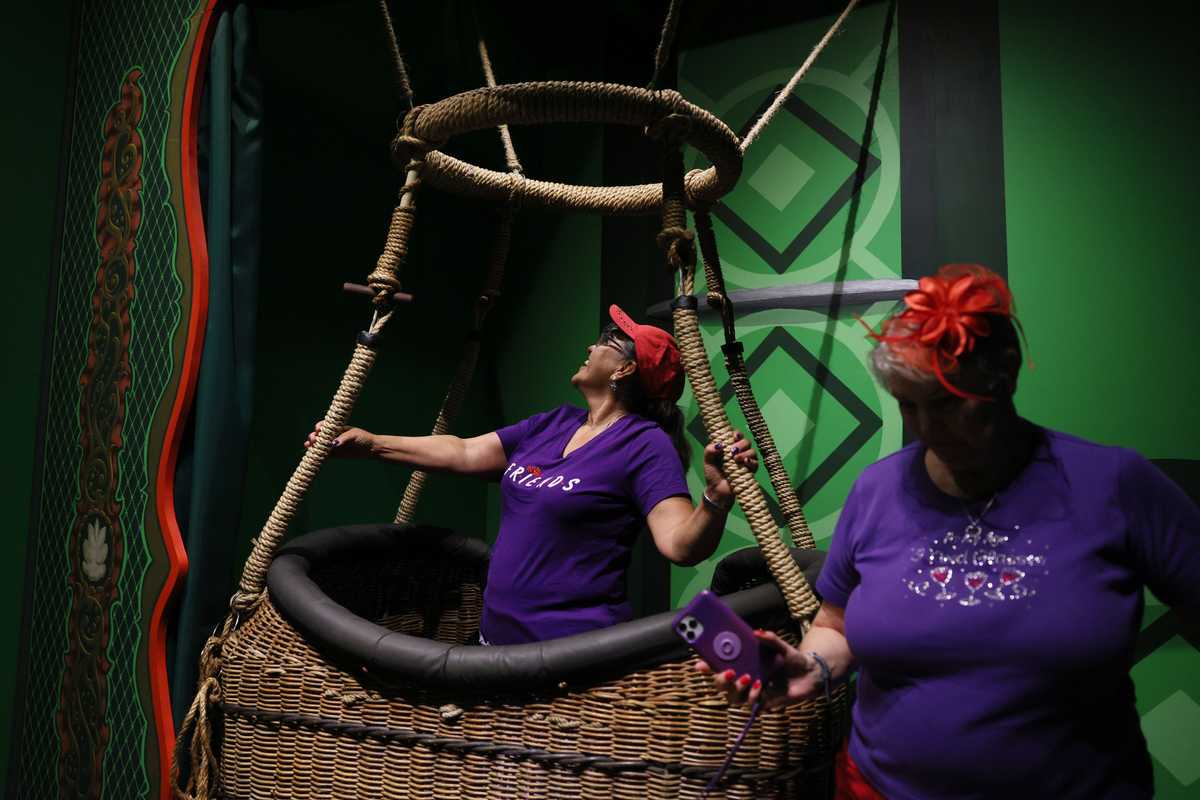
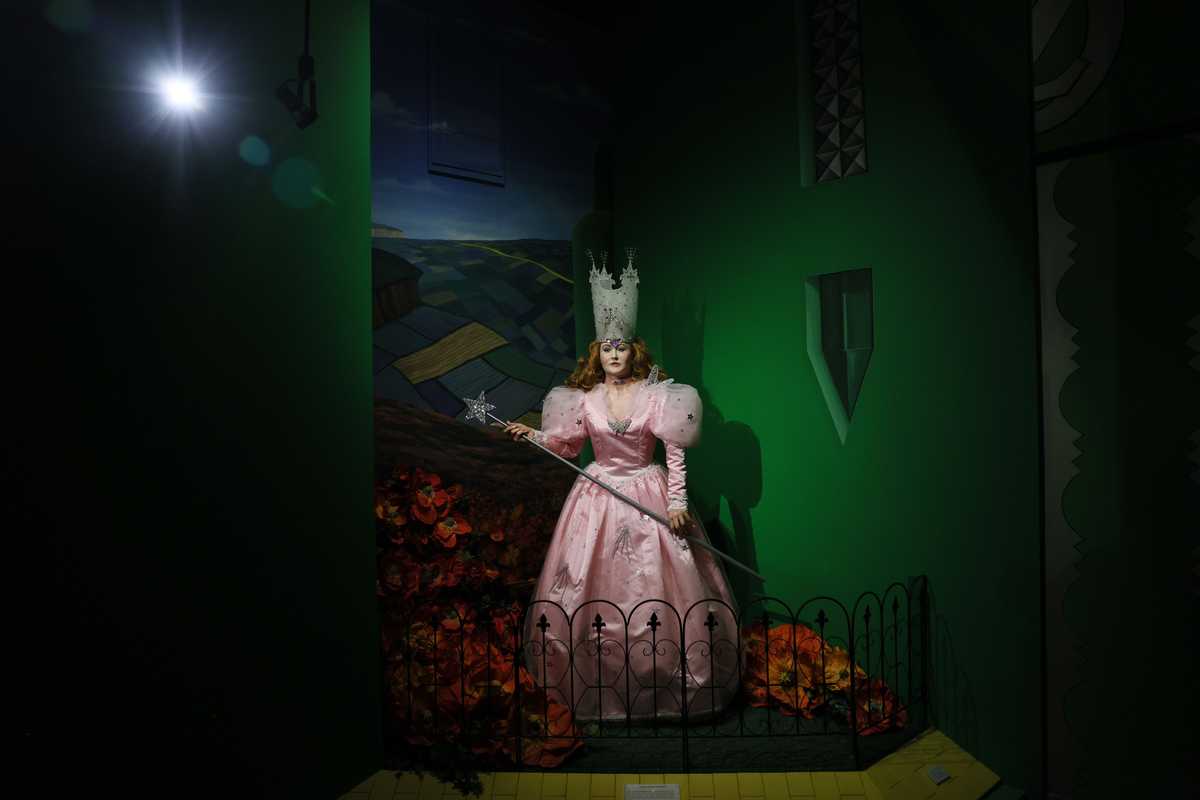
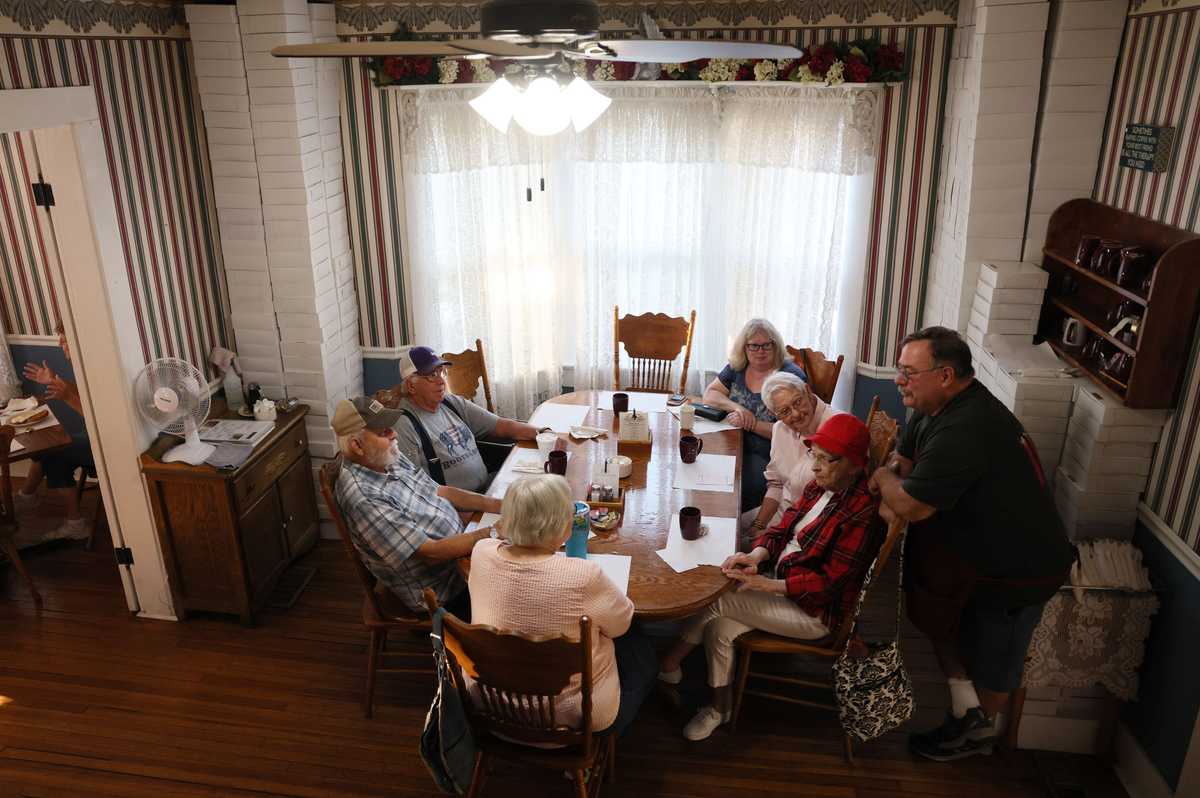
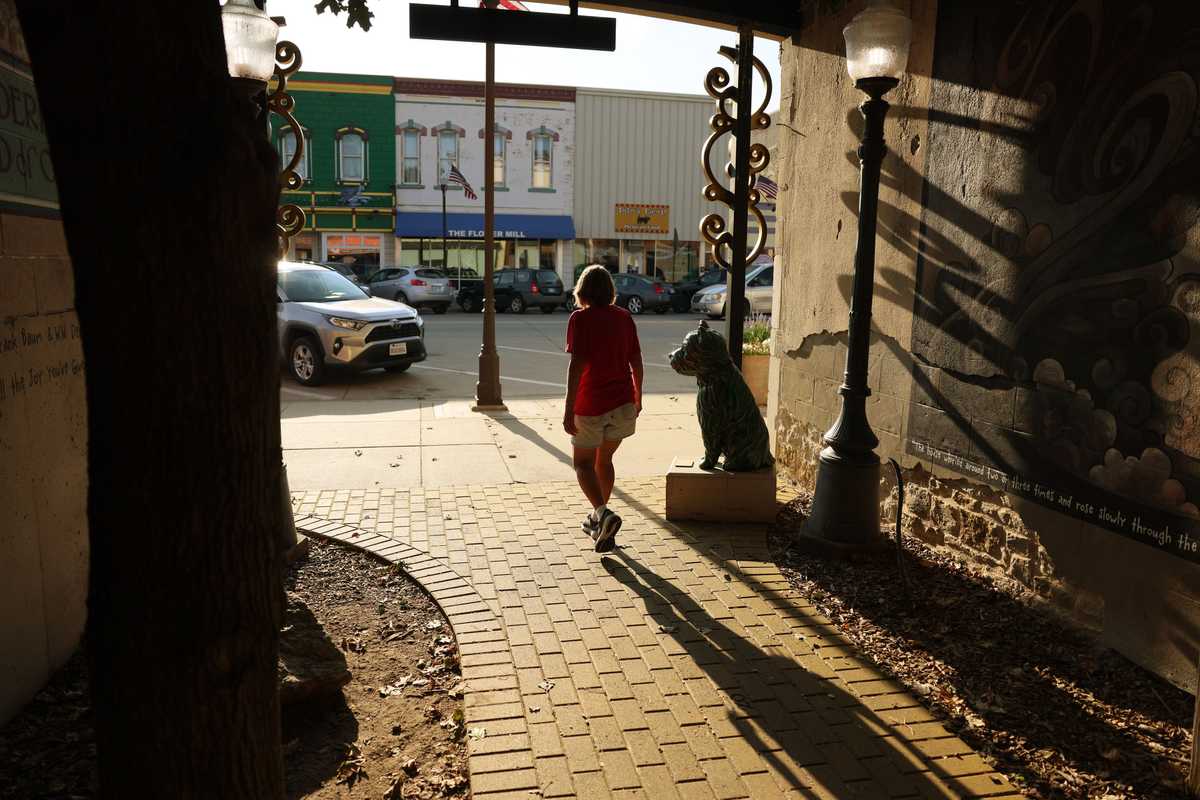

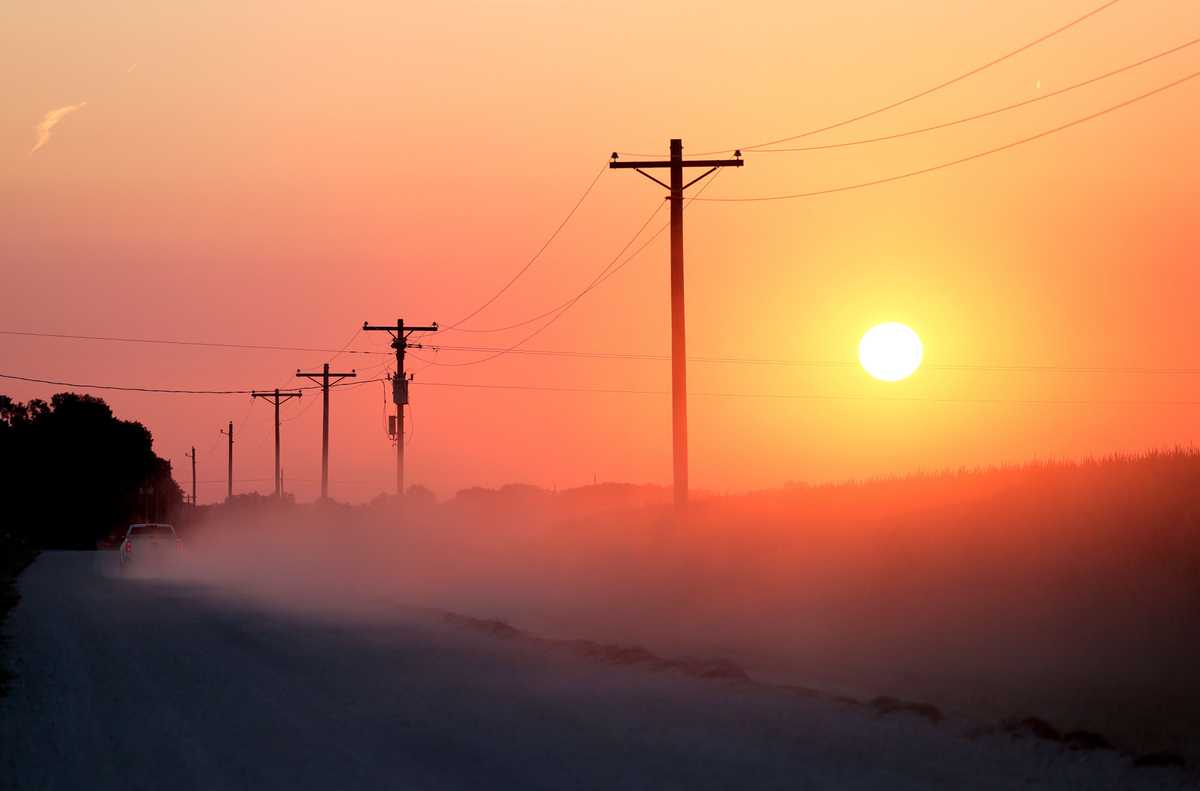
The OZ Museum has inspired new life in Wamego and that's reflected around the community. At a building once thought to be the birthplace of Walter P. Chrysler, the founder of Chrysler Corp., a pair of fake witch's legs stick out from under the foundation. (Jessica Rinaldi/Globe Staff)
“It’s created new jobs, and a steady stream of revenue here,” said Katlyn Stubbeman, the museum’s 28-year-old operations manager, whose love of museums came from her grandmother — coincidentally named Dorothy — a staffer at the Smithsonian Institution in Washington, D.C., for more than 30 years.
The museum was already buzzing with people when Fredrickson showed up soon after its 10 a.m. opening. In the lobby, she paid $2 for a turn in the “Wild Winds” tornado simulator booth (“I was sure my dress was going to blow up, but it didn’t”), then listened wide-eyed as Stubbeman hopped up on a replica of Auntie Em’s front porch and delivered her introductory spiel (“We begin this Technicolor journey . . . ”).
At last the screen door opened and Frederickson stepped through it.
She had survived hard things before. After coming out in 2006, she said, she was rejected by some in her school and religious community, and in her family. She experienced poverty and homelessness, and clawed her way back, carving out a new life as a vegetable farmer and massage therapist, a path centered in taking care of others.
Now, with the fate of her marriage unclear, she was heading back into uncertainty: a messy tangle of hope and sorrow and the unspooling mystery of what would happen next. Into the storm she would carry the memory of her journey to Oz, a secret talisman reminding her of her own strength.
Later, after leaving Kansas, Fredrickson etched a new message on the dust in her rear windshield: “NO PLACE LIKE HOME”.
She set her course for St. Paul, and kept on going.

Join the discussion: Comment on this story.
Credits
- Reporters: Julian Benbow, Diti Kohli, Hanna Krueger, Emma Platoff, Annalisa Quinn, Jenna Russell, Mark Shanahan, Lissandra Villa Huerta
- Photographers: Erin Clark, Pat Greenhouse, Jessica Rinaldi, and Craig F. Walker
- Editor: Francis Storrs
- Managing editor: Stacey Myers
- Photo editors: William Greene and Leanne Burden Seidel
- Video editor: Anush Elbakyan
- Digital editor: Christina Prignano
- Design: Ryan Huddle
- Development: John Hancock
- Copy editors: Carrie Simonelli, Michael Bailey, Marie Piard, and Ashlee Korlach
- Homepage strategy: Leah Becerra
- Audience engagement: Lauren Booker, Heather Ciras, Sadie Layher, Maddie Mortell, and Devin Smith
- Newsletter: LaDonna LaGuerre
- Quality assurance: Nalini Dokula
- Additional research: Chelsea Henderson and Jeremiah Manion
© 2022 Boston Globe Media Partners, LLC

